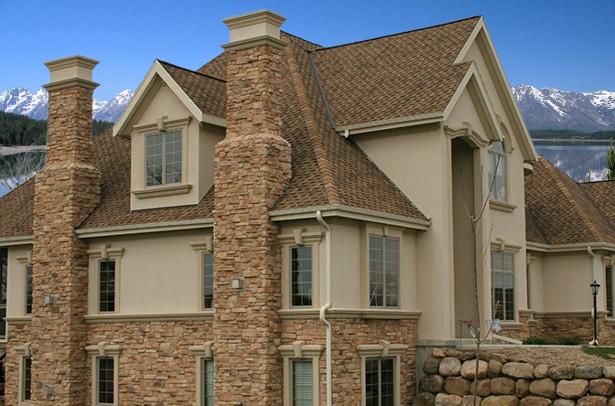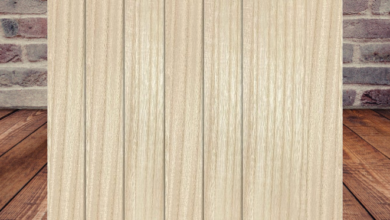Stone to Siding Transition

It is uncommon to see siding and stone used as exterior building materials. However, that doesn’t mean a design like that can’t improve your property’s visual appeal.
Your home’s exterior can stand out by creating contrast with the design of the siding and stones. On the other hand, you must master the art of crafting the ideal stone-to-siding transition if you are thinking about implementing such a design.
In this post, I’ll go over some expert advice on installing a faultless stone-to-siding transition, the supplies you should buy, and some potential dangers involved in the process.
Advice For Making The Switch From Stone To Siding
Building the transition can be a little difficult if you have decided that you want siding and stone on the outside of your house. Here are some pointers, though, to help simplify this process.
- Make Use Of A Transitional Item
I’ll go into much more detail about the various kinds of transition materials that you can use to go from siding to stone. But let me just stress how crucial it is to use transition materials in this kind of setup for the time being.
A seamless transition between the siding and stone is ensured by the use of a transition material. The joint would most likely look terrible if siding and stone were attached together without any sort of transition material.
Furthermore, it will be abundantly evident from a distance that the work was not done professionally. Both the external aesthetics and the value of your property may be impacted by that.
- Take Into Account A Staggered Or Straight Line Installation
Selecting a design is the next step after deciding on the transition material to use. Installing the transition material in a straight line is preferred by most people.
Given that this is the safest course of action, it makes sense. It is not the sole choice, though. You can also stagger the transition from stone to siding. This may improve the blending of the two contrasting materials.
- Select Vibrant Colors
You undoubtedly yearn for a contrasting design if your home’s exterior is composed of both siding and stone. I highly advise selecting contrasting colors for the transition material to make sure you accomplish that.
You can go with a finish or color that complements the stone or siding. Consequently, the transition will look good with the stone and siding.
Which Material Makes the Best Transition Between Stone and Siding?
You can use a variety of materials when transitioning from stone to siding. Nevertheless, I have carefully chosen the options below, taking into account their features and advantages;
- 1. The stone veneer Stone veneer is a common siding material when used alone. Aside from that, though, stone veneer has a lot of special qualities, like being flexible, lightweight, and easy to maintain. It is therefore among the greatest materials for stone-to-siding transitions.
The fact that this material comes in a variety of finishes is what I adore most about it. This simplifies the process of harmonizing the siding or stone colors. In the event that you decide on stone veneer, it can be put over the stone to provide a seamless transition.
- 2. Trim – A wide variety of materials are used to make trims in the construction industry. However, I’m talking about wooden and plastic trims here. You can always choose wooden or plastic trims if for some reason you don’t like stone veneer.
Not just when combined with siding and stone, these materials are highly renowned for producing seamless transitions. Along with drywall, tiles, and other building supplies, they are also utilized with them.
The ability to paint trim any color makes it an excellent choice for a siding-to-stone transition. With this transitional material, you can let your imagination run wild.
- 3. Metal flashing: If you’re looking for a sturdy material for the transition from stone to siding, this is the one you should choose. Weather and time will not be able to destroy a metal flashing.
Apart from routine painting and touch-ups, it requires no maintenance at all. The ability to modify metal flashing to match the transition area is an additional benefit.
Do You Require Expert Contractor Assistance To Construct A Stone-to-Siding Transition?
That is dependent upon your level of DIY expertise. If you are the one putting in siding and stone on the outside of your house, then I think you have the necessary expertise to move forward with this change.
However, I strongly advise hiring a professional contractor if you are unsure of your ability to convert from stone to siding using the materials listed above.
A stone-to-siding transition isn’t a simple project, to be honest. You must decide whether to install things in a straight line or in staggered order. Selecting the ideal transition material and colors will also be necessary.
There are many benefits to hiring an expert. You will be able to speak with an expert on a variety of topics in addition to being guaranteed a faultless transition.
What Difficulties May Arise During the Stone-to-Siding Transition?
- A Disparate Design
There’s a strong possibility that the design will look awful if the transition is done badly. For this reason, if you are unsure of your installation methods and skills, I strongly advise hiring a professional.
Siding and stone are not visually similar. For these two materials to blend together and enhance the appearance of your exterior, the transition must be flawless.
- Overweight
The stone is heavier than the siding. If you decide to use a heavy transition material, the structure might not be able to support the weight. And structural problems may arise from this.
Thus, consider the weight when selecting the material for your stone-to-siding transition. Rather than run the risk of additional weight damaging your wall structure, go with a simple design like plastic trim.
- Inadequate Insulation
Make sure the space where you want to install a transition material—between siding and stone—is adequately insulated.
If you don’t, heat will find a way out, which will cause your energy costs to soar. Thus, don’t merely cover up the opening in the transitional area. Make sure it is well insulated.
- Moisture Infiltration and Accumulation
The worst issue was saved for last. Moisture is the first thing you should try to avoid when building a stone-to-siding transition. Inadequate transition work can allow moisture to creep in behind the stone and siding.
This will hasten the rot of any materials that are susceptible. If that wasn’t enough, it can also hasten the growth of mold. To stop moisture from entering a stone-to-siding transition, you need to make sure the joint is completely sealed.
Nevertheless, your stone-to-siding transition shouldn’t obstruct your drainage plane when there is moisture penetration. Your home’s walls must allow moisture to escape. Therefore, when installing your transition, never obstruct the drainage plane.
Is Flashing A Good Tool For Stone-to-Siding Transitions?
The major purpose of flashing is to stop water from getting into joints. The weatherproofing properties of flashing can be advantageous in a stone-to-siding transition. It’s not always the most aesthetically pleasing material, though, for a stone-to-siding transition.
Flashing functions best as a barrier against weathering in comparison to stone veneers and trims. But choose the solutions I previously suggested if you want a seamless and attractive transition.

